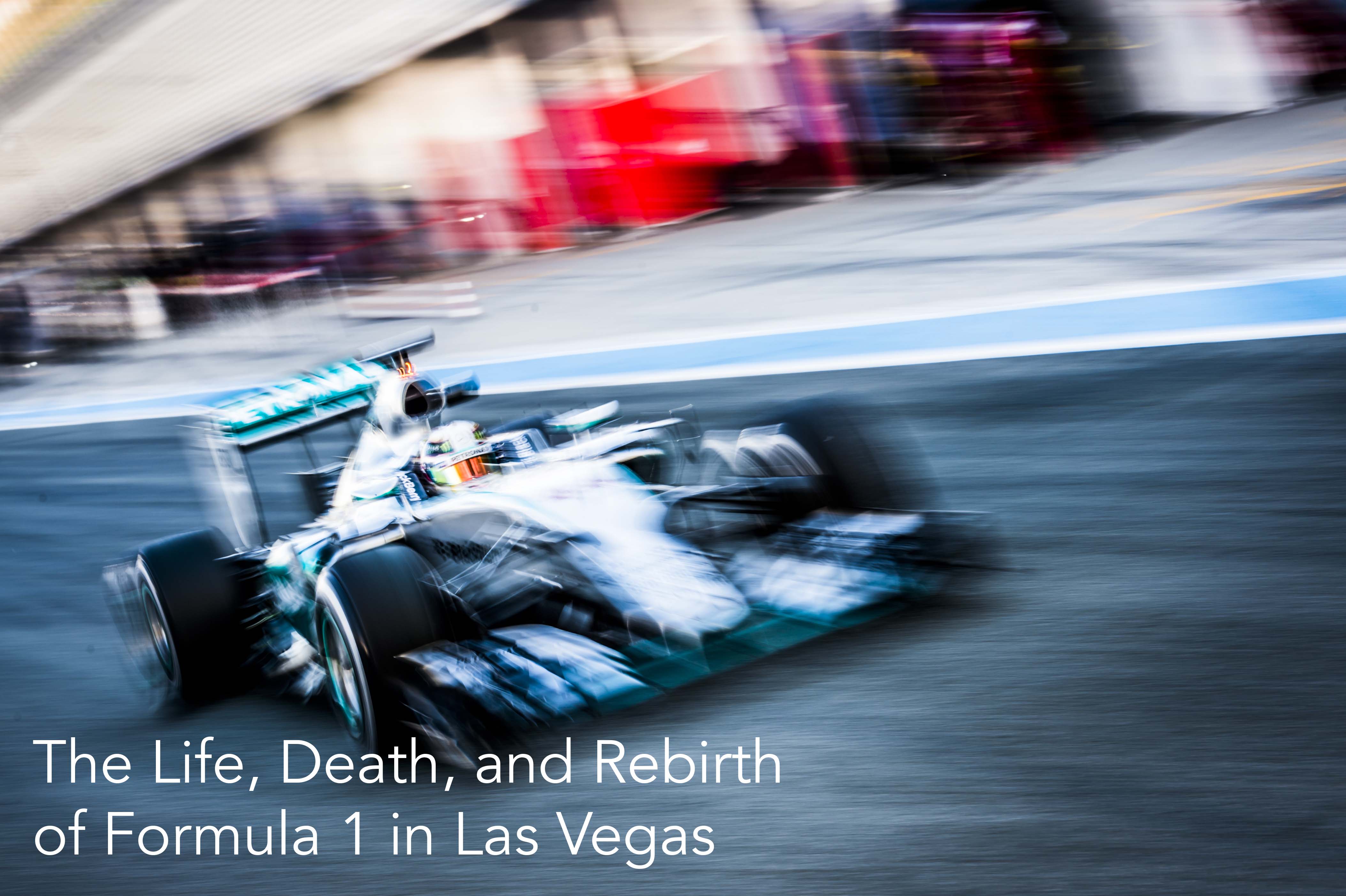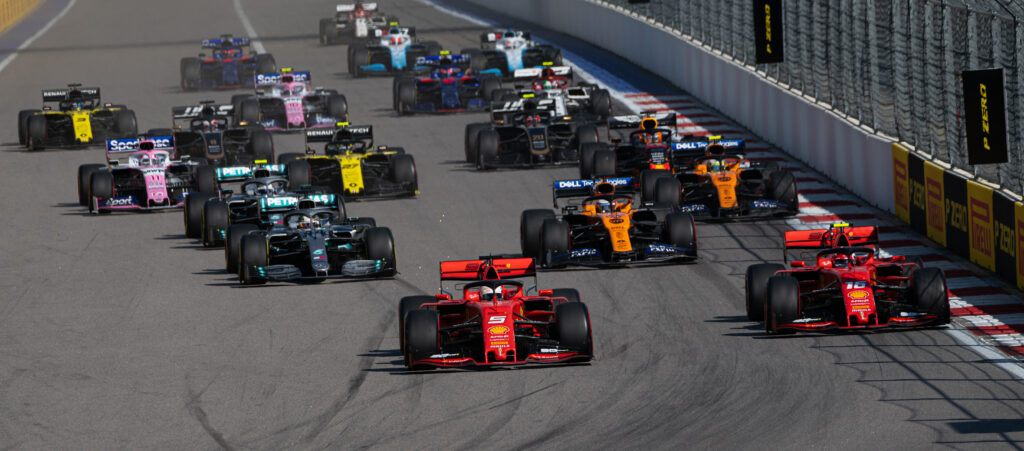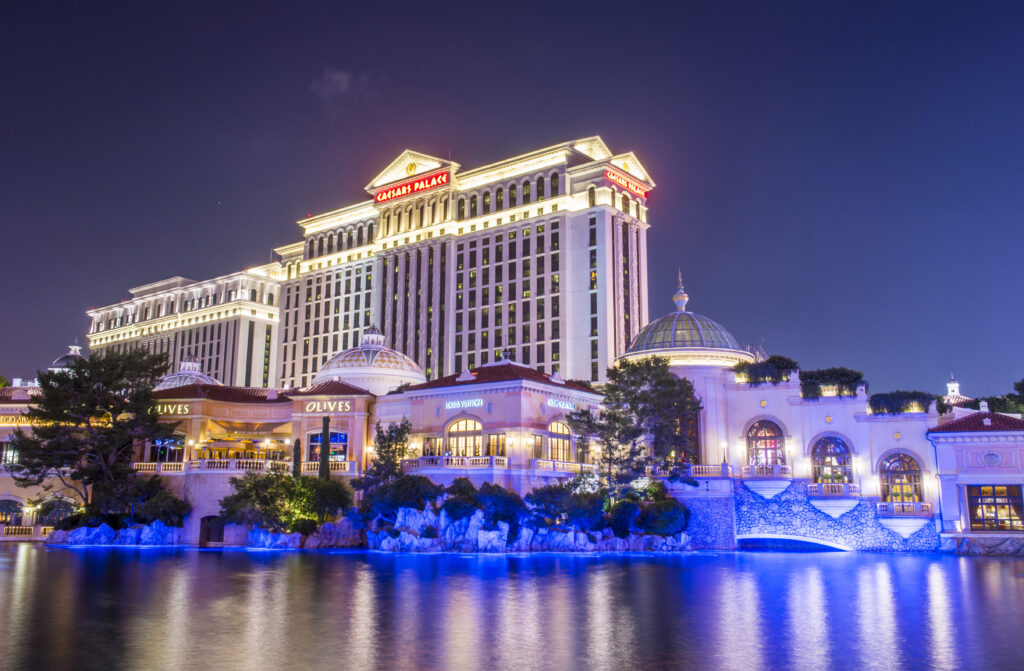 The World’s Premier Racing Sport Has a History in Las Vegas. 30 Years Later, It May Return Again.
The World’s Premier Racing Sport Has a History in Las Vegas. 30 Years Later, It May Return Again.
Written By J. Malcolm DeVoy
Almost every other weekend, young men cram themselves into single-seat, open-cockpit cars to compete in the most intense and expensive motorsport in the world. From historically significant tracks like Silverstone and Monza to the streets of Monaco, Baku, and soon Jeddah and Miami, engines roar as they propel drivers in cars that weigh 1,000 pounds less than a Honda Civic around the track at speeds up to 223 miles per hour. Harsh turns subject drivers to gravitational forces between four to six g-forces; astronauts merely experience three g-forces during a rocket take-off. For some drivers, the allure of annual pay measured in the tens of millions brings them to the track. For others, the risk of death is too seductive to resist, like standing too close to a waterfall or becoming too intrigued by fire. The result is the most expensive and glamorized racing sport in the world, Formula 1.
Formula 1 fans bristle when their sport is confused with NASCAR, which also has a reliable presence in Las Vegas. While an entire NASCAR stock car can be had for around a quarter million dollars, that amount will only fetch a single front wing on a Formula 1 car: a piece that is bent, broken off, and shattered so routinely in crashes that it might as well be consumable. With engines that cost millions of dollars, and teams that require more than one hundred million dollars a year to simply exist—and several times that amount to be competitive—the economics of Formula 1 are incomparable.
Opulence like this seems like it would have a natural home under the lights of Las Vegas. It once did. As Formula 1 makes a number of calculated inroads with American audiences through Netflix, social media, and ownership by American media titan Liberty Media, it seems poised to return again.
A Brief History of Formula 1
Modern Formula 1 racing arose in Europe from the ashes of World War II but traces its origins back to the Grand Prix championships held in various countries throughout the 1920s and 1930s, tracking the development and evolution of the automobile. The Fédération Internationale de l‘Automobile (“FIA”), which exists as the governing and rule-setting body for Formula 1, was founded in 1946 and exists today. Thereafter, in 1950, the world championship system of racing and ranking of drivers began, which continues on today. While this era was defined by the dominance of Mercedes and Ferrari, it could not commence until some time had passed after the world war: first, because the car factories had been destroyed, and second, due to post-war restrictions on industrial capacity and activities. (Following World War II, BMW could not begin making automobiles until 1950 due to post-war sanctions on German manufacturers and entered a period of financial hardship in the following decade as a result.)
“Formula 1” refers to the FIA’s technical regulations for the aerodynamics, design, engine, and power train of the car – the formula for designing the car internally and externally. The evolution of these regulations corresponds to the changing appearance of Formula 1 cars from the 1950s through today, including many key changes: from the engine moving from the front to the rear of the car, the incorporation of front and rear wings, to the changing width and length of the car. Beginning in 2022, radically new aerodynamic regulations will be implemented that are intended to promote greater diversity among car designs and pose new challenges for car constructors to address. These changes range from increased wheel sizes—from 13” now to 18” next year—to the inclusion of partial wheel coverings and a new curved wing design.
 FIA’s regulation changes have also reflected changing powertrain technology and environmental concerns. Within the last twenty-six years, the FIA has moved from naturally aspirated V-10 engines to slightly smaller naturally aspirated V-8 engines, and then finally to its current power unit configuration: a six-cylinder turbocharged engine mated with a battery-powered electric engine. This current epoch of engine regulations is commonly known as the “turbo-hybrid” era. It, too, will end with the advent of new engine regulations scheduled to take effect in 2025, which will include emissions limits.
FIA’s regulation changes have also reflected changing powertrain technology and environmental concerns. Within the last twenty-six years, the FIA has moved from naturally aspirated V-10 engines to slightly smaller naturally aspirated V-8 engines, and then finally to its current power unit configuration: a six-cylinder turbocharged engine mated with a battery-powered electric engine. This current epoch of engine regulations is commonly known as the “turbo-hybrid” era. It, too, will end with the advent of new engine regulations scheduled to take effect in 2025, which will include emissions limits.
Despite being born in Europe, the Formula 1 schedule of a little more than twenty races per year has evolved to reflect the shifting poles of wealth and economic power across the globe. Formula 1 today remains solidly grounded in its European roots, with annual races in Spain, Hungary, Great Britain, Belgium, Italy, and, iconically, Monaco. The worldwide appeal of the sport has been recognized with races in South America, held in Mexico and Brazil, and Southeast Asia as well, with Singapore, Malaysia, and India playing host to races in the recent past, and the 2020 coronavirus pandemic forcing the cancellation of the inaugural Hanoi, Vietnam Grand Prix. In East Asia, China and Japan regularly hold races, while the Middle East’s automotive culture and dominant petroleum companies have given it a commanding presence in racing: each year, the seasons begin and end in races held in Bahrain, Abu Dhabi, and for the first time ever in 2021, Saudi Arabia.
America once played a significant role in Formula 1’s annual season, playing host to numerous races. Currently only the Circuit of the Americas in Austin, Texas, hosts a Formula 1 race, but beginning in 2022 Miami will play host to a race for the following 10 years. Some of this is no doubt due to the growing popularity of Formula 1 in the United States. Bolstered by the Netflix series Drive to Survive, Formula 1 has become the fastest-growing sport on social media. Its popularity in the United States, however, can be seen more as a return to form than a new phenomenon, and a return to a time when races were held in locations as varied as Detroit, Phoenix, Watkins Glen in Upstate New York—and even Las Vegas.
The Caesars Palace Grand Prix
Where Caesars Forum Shops and The Mirage now stand, there was once racing. Dubbed the Caesars Palace Circuit, the 1981 and 1982 Formula 1 season finales were held just feet away from the Las Vegas Strip on a track just barely over 2.25 miles in length. The counterclockwise-run track was defined by its interior turns that seemed to fold in on themselves to the point of collapse; the racing dynamics of the track caused veteran driver Nelson Piquet to be extracted from his car, vomiting and unable to walk on his own two feet. While some criticized the track for being a converted parking lot, Mario Andretti praised it as one of the best he had ever conquered.
To this day, the two Caesars Palace Grand Prix races remain controversial to fans both new and old alike. From the track design to the location, arguments pro and con continue to reverberate through the Internet. In an era when new and seemingly unconventional races are frequently added to the calendar, including street races in Baku, Azerbaijan, and soon in Jeddah, Saudi Arabia and Miami, Florida, a track created in a Las Vegas parking lot hardly seems implausible, or even unconventional.
 The spirit of the Caesars Palace Grand Prix lives on today, even outside of Las Vegas, in FIA-sanctioned races such as Formula E. While Formula 1 runs on gasoline, Formula E cars are entirely electric and battery powered, running on smaller circuits that frequently are constructed on a parking lot for a long weekend of exposition and racing. As scandalizing as the Caesars Palace Circuit may have been forty years ago, these kinds of converted circuits are accepted today by racing devotees.
The spirit of the Caesars Palace Grand Prix lives on today, even outside of Las Vegas, in FIA-sanctioned races such as Formula E. While Formula 1 runs on gasoline, Formula E cars are entirely electric and battery powered, running on smaller circuits that frequently are constructed on a parking lot for a long weekend of exposition and racing. As scandalizing as the Caesars Palace Circuit may have been forty years ago, these kinds of converted circuits are accepted today by racing devotees.
Time moves on and progress marches ever forward, yielding a shopping mall and one of the original mega-resort casino hotels where the Caesars Palace Circuit once stood. A precise recreation of the original Caesars Palace Grand Prix is impossible. As an international city characterized by extravagance, wealth, and grandeur, hosting a grand prix would practically seem Las Vegas’ birthright. Fortunately, Liberty Media seems to hold the same belief.
A Return of Formula 1 to Las Vegas?
For years, rumors have swirled that Formula 1 would return to Las Vegas. Although it seemed to be a consensus that Formula 1 would return to Las Vegas, specific details and verifications were as elusive as an Elvis sighting; Formula 1’s interest in Nevada seemed to be more of a mood and an assumption than a verifiable fact.
This seems to be changing. In March of this year, Formula One World Championship, its parent company Liberty Media, and the Las Vegas Convention and Visitors Authority took legal action against a promotional group that the plaintiffs alleged was interfering with their efforts to bring a Formula 1 race to Las Vegas. At the time of this writing, the lawsuit pending in the Business Division of Clark County District Court appears to have moved little past its initial exchange of claims and counterclaims. Yet, progress seems to be underway. In late July of 2021, Aston Martin Formula 1 Racing team principal Lawrence Stroll confirmed that talks were underway to hold a race in Las Vegas, but with precious few other details revealed to the public.
Being unable to envision a future for Formula 1 racing in Las Vegas requires a deficit of imagination. By all appearances, Liberty Media is trying to open Southern Nevada’s doors to bring it something unique, rare, and economically consequential. The engineering marvels that make holy anticipated racing circuits from the narrow and historic streets of Baku and Monaco, and the urban core of Singapore, can be used to show off the nighttime Las Vegas Strip to the world. The roar of engines will echo from the strip’s famous resorts, with Las Vegas’ engineering marvels setting the backdrop for the apex of the racing world’s technical achievements. With determination and just a little bit of luck, Las Vegas will once again rightly serve as a home to this international spectacle.
J. Malcolm (“Jay”) DeVoy is Of Counsel in the Las Vegas office of Holland & Hart LLP, a multi-state law firm of 400 attorneys serving the Mountain-West region. Jay regularly advises physicians, practices, and medical facilities including psychiatric facilities, surgery centers, and hospitals regarding compliance with federal and state healthcare laws, including the Anti-Kickback Statute, Stark Law, HIPAA, and Nevada’s self-referral law.

Leave a Comment